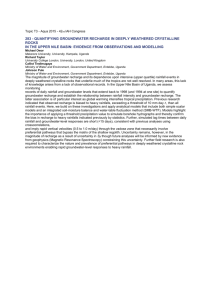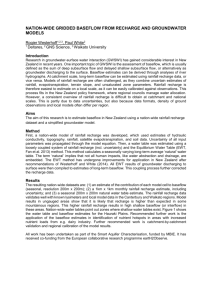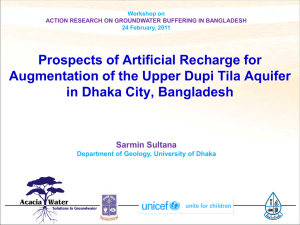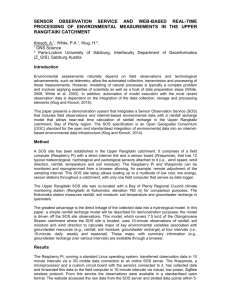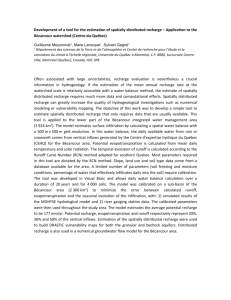Click here - GeoMontreal 2013
advertisement
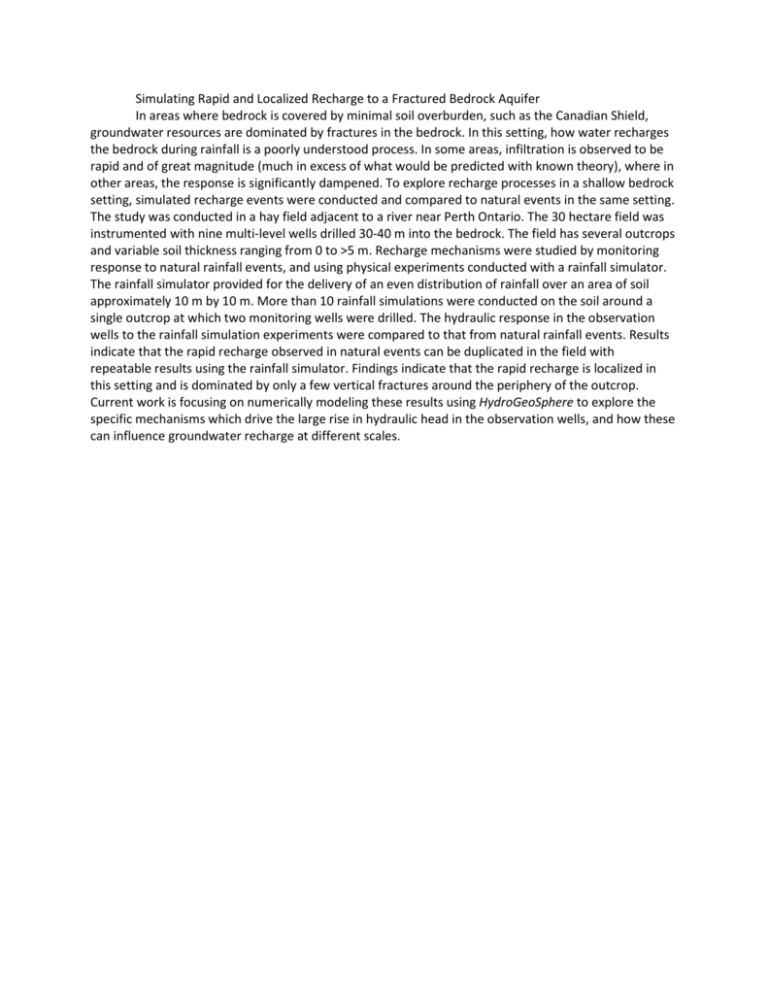
Simulating Rapid and Localized Recharge to a Fractured Bedrock Aquifer In areas where bedrock is covered by minimal soil overburden, such as the Canadian Shield, groundwater resources are dominated by fractures in the bedrock. In this setting, how water recharges the bedrock during rainfall is a poorly understood process. In some areas, infiltration is observed to be rapid and of great magnitude (much in excess of what would be predicted with known theory), where in other areas, the response is significantly dampened. To explore recharge processes in a shallow bedrock setting, simulated recharge events were conducted and compared to natural events in the same setting. The study was conducted in a hay field adjacent to a river near Perth Ontario. The 30 hectare field was instrumented with nine multi-level wells drilled 30-40 m into the bedrock. The field has several outcrops and variable soil thickness ranging from 0 to >5 m. Recharge mechanisms were studied by monitoring response to natural rainfall events, and using physical experiments conducted with a rainfall simulator. The rainfall simulator provided for the delivery of an even distribution of rainfall over an area of soil approximately 10 m by 10 m. More than 10 rainfall simulations were conducted on the soil around a single outcrop at which two monitoring wells were drilled. The hydraulic response in the observation wells to the rainfall simulation experiments were compared to that from natural rainfall events. Results indicate that the rapid recharge observed in natural events can be duplicated in the field with repeatable results using the rainfall simulator. Findings indicate that the rapid recharge is localized in this setting and is dominated by only a few vertical fractures around the periphery of the outcrop. Current work is focusing on numerically modeling these results using HydroGeoSphere to explore the specific mechanisms which drive the large rise in hydraulic head in the observation wells, and how these can influence groundwater recharge at different scales.
